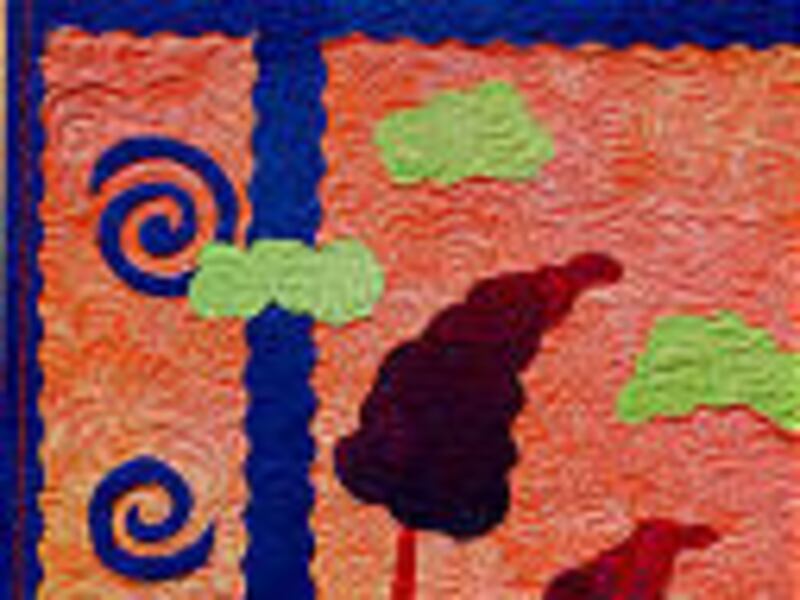Quilts started out on beds. Many quilts are now hung on walls.
What seems like a simple transition actually embodies complex cultural and artistic attitudes and changes. "Quilts Rooted in Tradition: Art Quilts From the Rocky Mountain Quilt Museum," now on display at the Utah Museum of Fine Arts, documents this shift, tracing the development of the art quilt movement from the 1980s to the present.
"It links the history of the art quilt with traditional quilting," said Judith Trager, curator of the exhibit for the Rocky Mountain Quilt Museum, which is located in Golden, Colo.
The exhibit debuted at that museum last April. The UMFA show marks its first showing outside of Colorado. It will be here through Oct. 15 and then will travel throughout the country, said Trager, in a telephone interview from her Colorado home.
You will see some very traditional art quilts from the early years, she said, and then see how the movement has changed and grown in the past decades. "It's very important in terms of showing how quilts go from the bed to the wall. There's not another quilt exhibit that does this."
For a long time, she said, quilting was considered the stepchild of American arts, but it came into prominence with the wave of nostalgia that came with the celebration of the American Bicentennial in 1976.
In 1979, the Whitney Museum in New York put together an exhibit on Amish quilts that was billed as "The Quilt as Art." After that, there was no looking back, said Trager. "Bed quilts were still very much loved, but they were also on the walls to stay."
The exhibit is arranged by decades. From those beginnings in the 1980s, the '90s became the decade of "experimentation, innovations, energy and enthusiasm." Materials began changing — instead of just calicos, there were hand-dyed fabrics, painting, silk-screening, applique, stamping, distressing, bleaching, embellishing and more.
The decade of the 2000s has continued to reflect the "force of tradition and the shock of the new" with bold embellishments, vivid colors and new techniques.
One of the biggest changes in the '90s was "the move away from the grid," said Trager. "This started in the late '70s and '80s but shows up most in the '90s. You may see repeat patterns, but they are not on the grid. There is a definite movement away from patchwork to using the surface as a canvas. The quilts become more painterly."
Another development in the late '90s was photographic printers that could print on cloth that was 72 inches wide. "We see the introduction of photography and now digital imaging. There is now a blending of many media."
Also important is that the art quilt movement has attracted a lot of men, said Trager. "The traditional quilting world is largely female. Like my mother and my sisters. They sat around the quilting frame and passed on what they knew. It was unusual for men to be anywhere near."
Then artist Robert Rauschenberg began experimenting with fabric art. "It was like he gave men permission to fool around with fabric, because he was fooling around with fabric." While many women still come to quilting from a sewing/fabric background, "most men come from art schools. They are painters, sculptors and then come to quilting. So it is very, very interesting to see them there."
But as quilts have moved from beds to walls, one thing has not changed, said Trager. They are still quilts. They have a front, a middle layer and a back. The front may be sewn or silk screened or painted; the middle may be batting or canvas or flannel or some other material; it might all be held together with stitching or with grommets, pins, staples, tacks, beads, buttons or something else. "But they are still made in the time-honored tradition of three layers."
If you go
What: "Quilts Rooted in Tradition"
Where: Utah Museum of Fine Arts, University of Utah
When: Through Oct. 15.
Tuesday-Friday, 10 a.m-5 p.m.;
Wednesday until 8 p.m.; weekends, 11 a.m.-5 p.m.
How much: adults, $5; youths (6-18), seniors, $3
Phone: 581-7332
Web:www.umfa.utah.edu.
E-mail: carma@desnews.com




